Stretches of Graphs (Edexcel IGCSE Maths A): Revision Note
Exam code: 4MA1
Did this video help you?
Stretches of graphs
What are stretches of graphs?
Stretches of graphs are a type of transformation that pushes points away from, or towards, the
-axis or
-axis
Graphs look like they have been stretched or squashed
either horizontally or vertically

How do I stretch graphs?
Let
be the equation of the original graph
Vertical stretches: y=af(x)
is a vertical stretch (in the
-direction) of scale factor
The
-coordinates stay the same but the
coordinates are multiplied by
Points appear to move parallel to the
-axis
either stretching vertically away from the
-axis if
or squashing vertically towards the
-axis if
Points on the
-axis stay where they are

Horizontal stretches: y=fa(x)
is a horizontal stretch (in the
-direction) of scale factor
(not
)
The
-coordinates stay the same but the
coordinates are multiplied by
(divided by
)
Points appear to move parallel to the
-axis
either squashing horizontally towards the
-axis if
or stretching horizontally away from the
-axis if
Points on the
-axis stay where they are
This means
is more like a horizontal squash of scale factor 2
though the correct way to say this is a horizontal stretch of scale factor
This also means that
is a horizontal stretch of scale factor 2
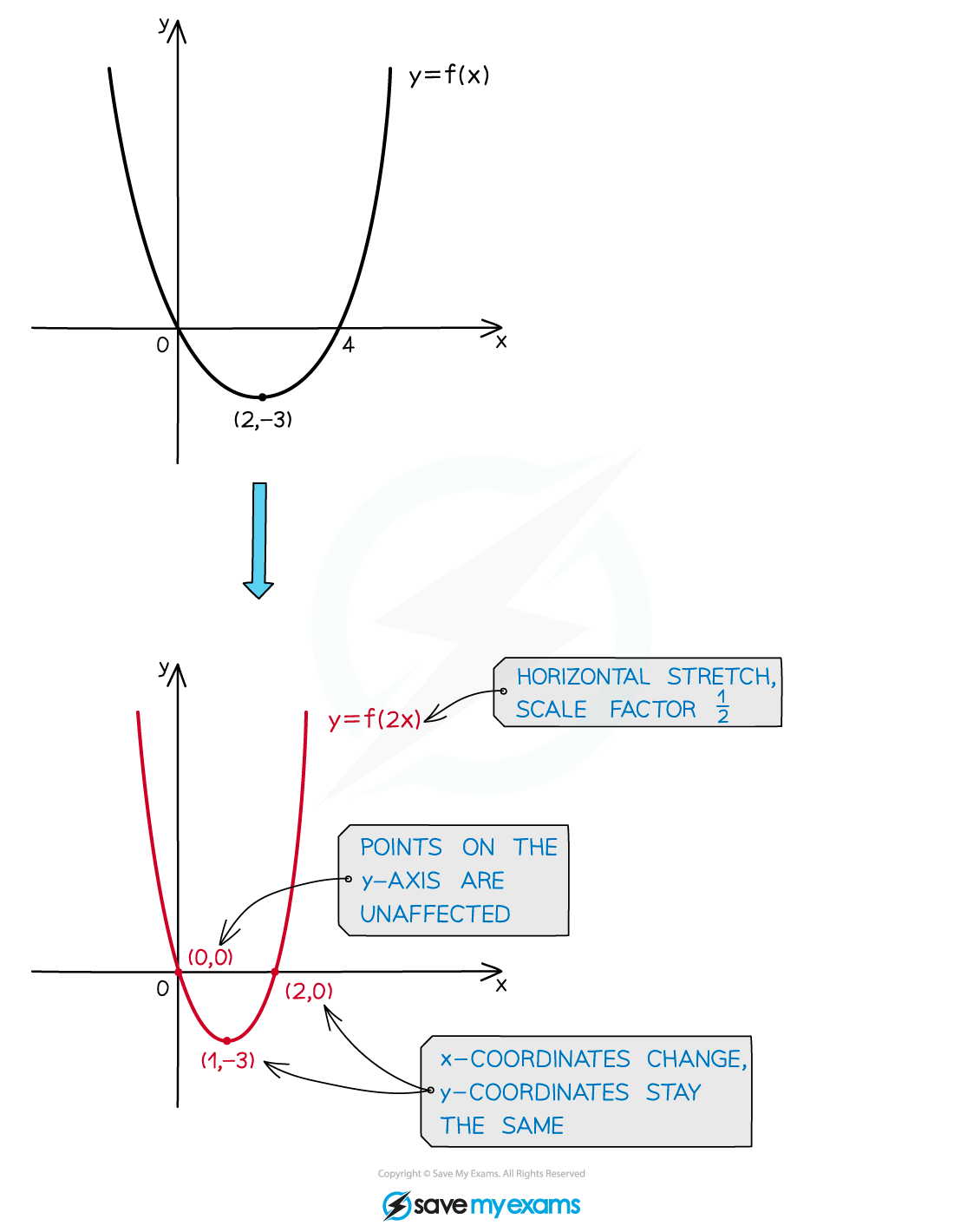
What happens to asymptotes when a graph is stretched?
Any asymptotes of
are also stretched
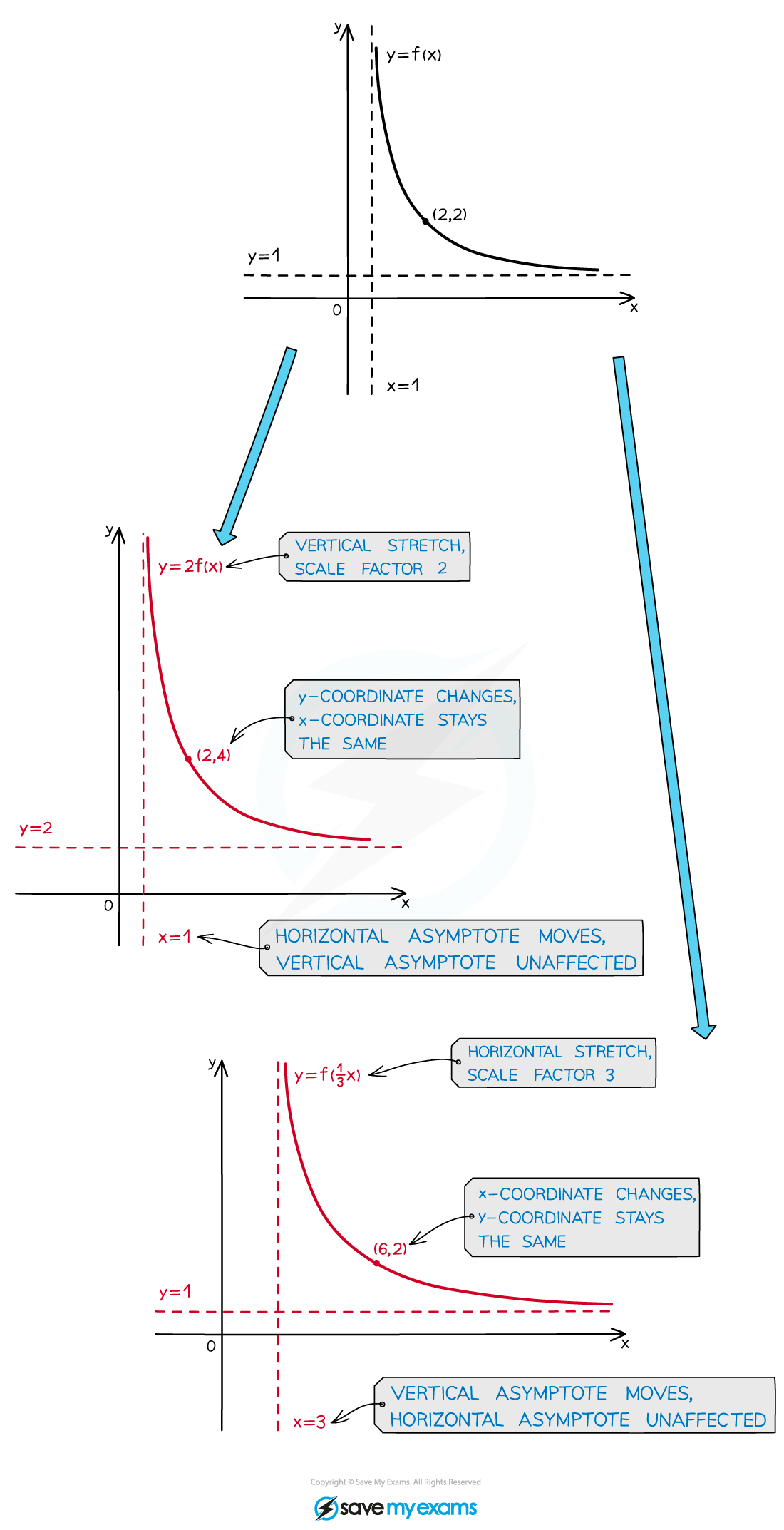
How does a stretch affect the equation of the graph?
When a graph is stretched, you can change its equation algebraically
There is no need to sketch the graph
Stretching vertically by a scale factor of 3 puts a 3 in front of the whole equation
For example,
becomes
This simplifies to
Stretching horizontally by a scale factor of
("squashing horizontally" by a scale factor of 3) replaces any
with
in the equation
For example,
becomes
This simplifies to
How do I apply a combined stretch?
The graph of
is a combined stretch, both horizontally and vertically
It does not matter which order you apply these in
For example, a horizontal stretch of scale factor
followed by a vertical stretch of scale factor
Worked Example
The diagram below shows the graph of .
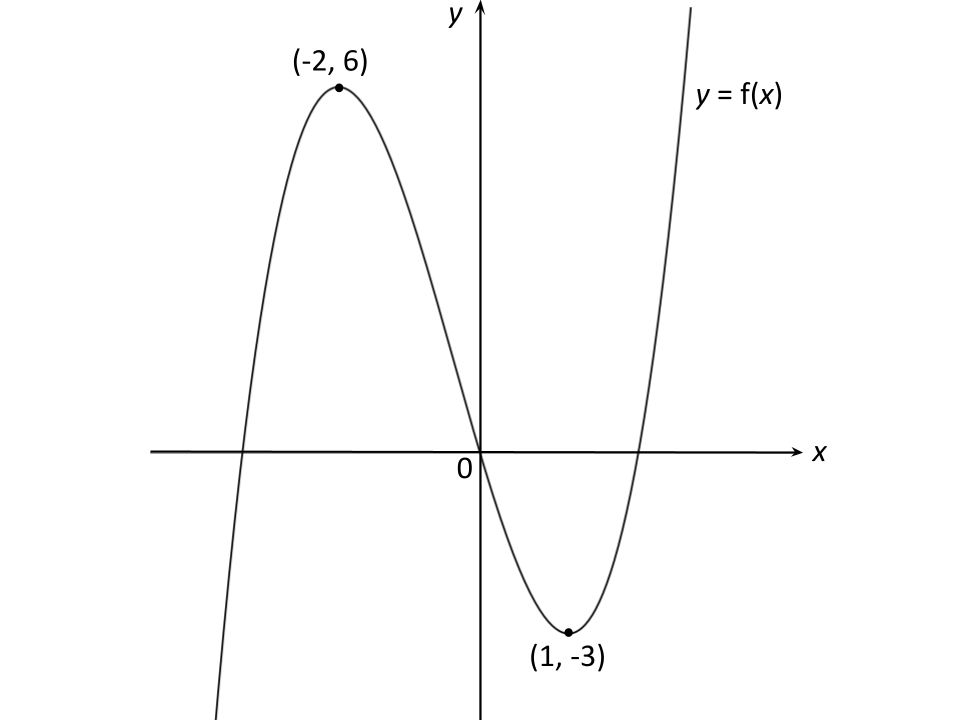
Sketch the graph of .
Answer:
represents a horizontal stretch of scale factor
And represents a vertical stretch of scale factor 2
Apply these in any order, e.g. start with the horizontal stretch, scale factor 3
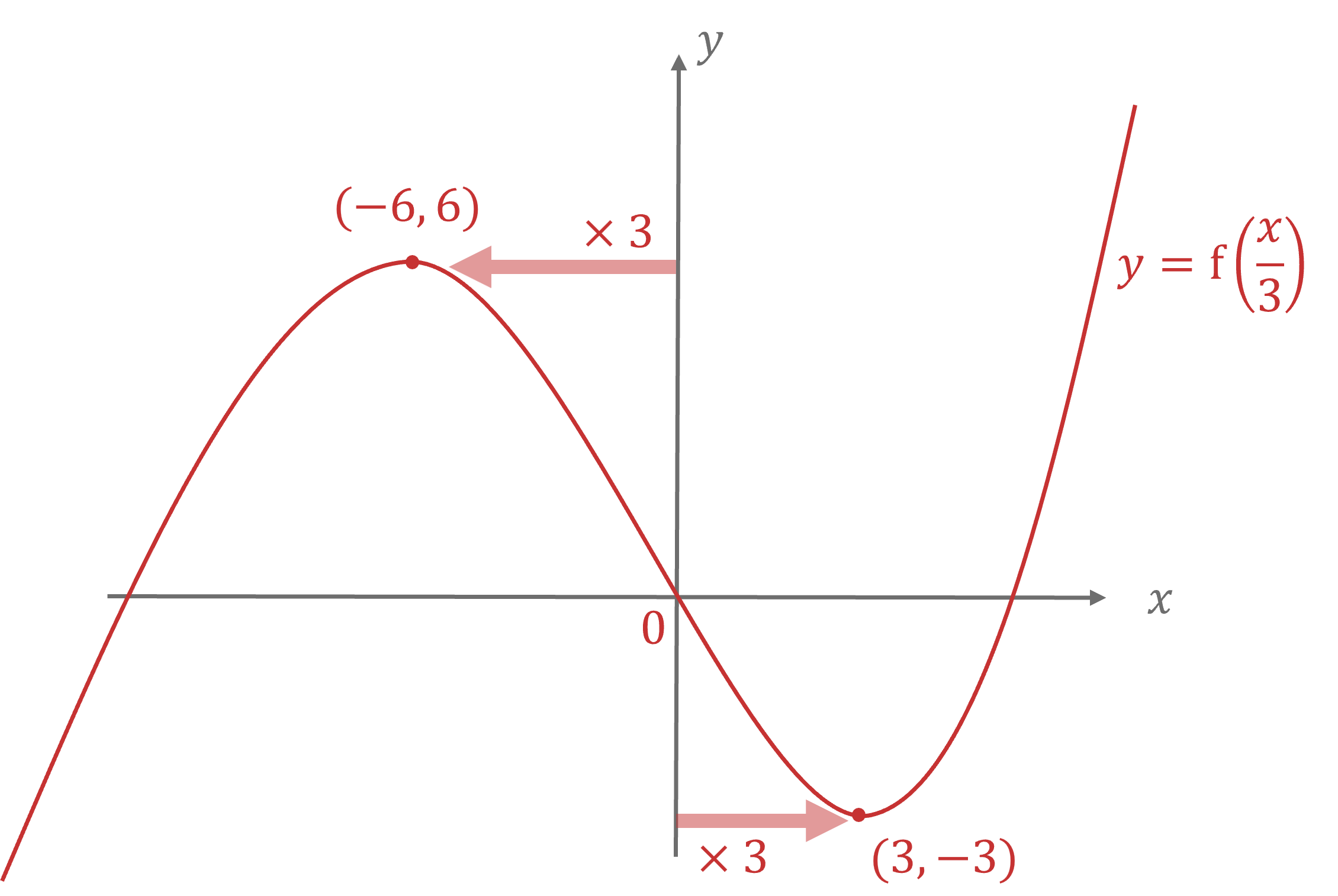
Now apply a vertical stretch of scale factor 2
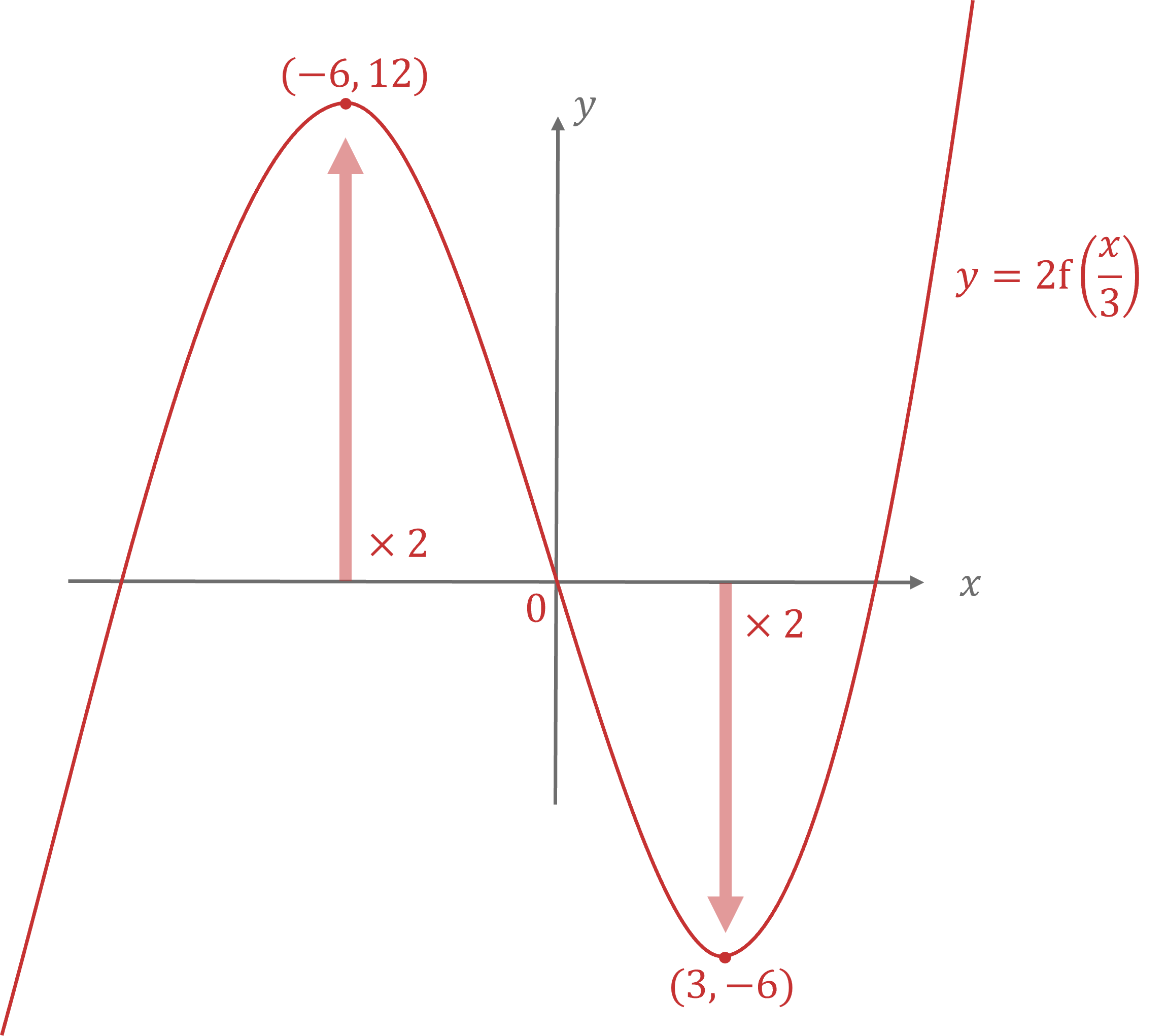
Show the coordinates of the new points clearly
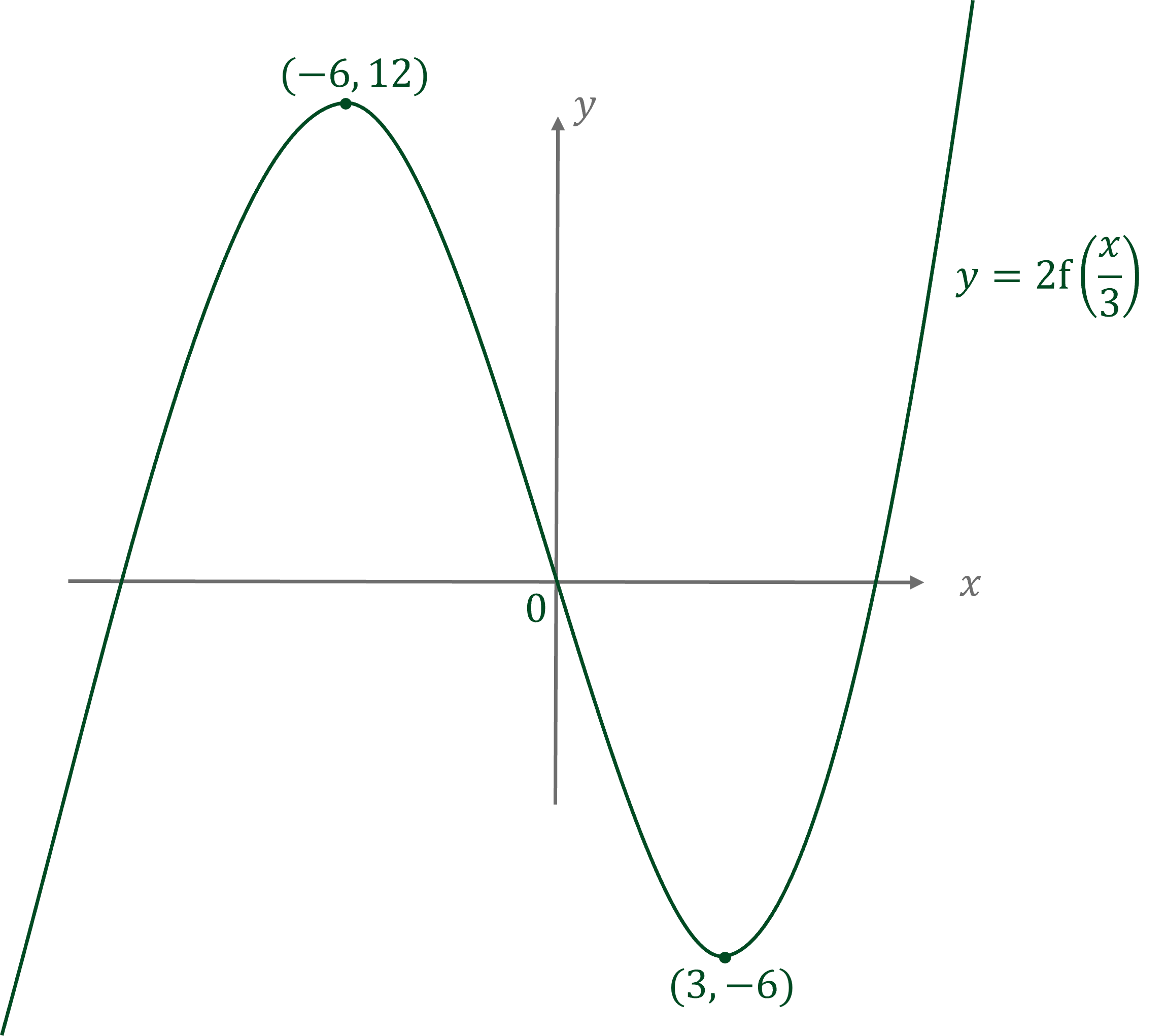

Unlock more, it's free!
Did this page help you?